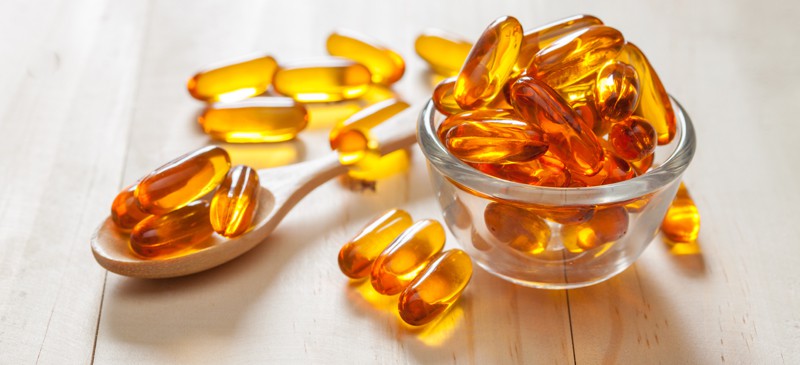This Dr. Axe content is medically reviewed or fact checked to ensure factually accurate information.
With strict editorial sourcing guidelines, we only link to academic research institutions, reputable media sites and, when research is available, medically peer-reviewed studies. Note that the numbers in parentheses (1, 2, etc.) are clickable links to these studies.
The information in our articles is NOT intended to replace a one-on-one relationship with a qualified health care professional and is not intended as medical advice.
This article is based on scientific evidence, written by experts and fact checked by our trained editorial staff. Note that the numbers in parentheses (1, 2, etc.) are clickable links to medically peer-reviewed studies.
Our team includes licensed nutritionists and dietitians, certified health education specialists, as well as certified strength and conditioning specialists, personal trainers and corrective exercise specialists. Our team aims to be not only thorough with its research, but also objective and unbiased.
The information in our articles is NOT intended to replace a one-on-one relationship with a qualified health care professional and is not intended as medical advice.
How Much Omega-3 Per Day Should You Take?
November 11, 2022

Without the proper preparation, picking out an omega-3 supplement can be pretty challenging with all the different doses and types out there. Not only do you have to decide between fish oil, krill oil, algal oil and other omega-based supplements, but you also have to determine how much omega-3 per day you need to meet your daily requirements.
The amount of omega-3 fatty acids that you need each day depends on a number of different factors, from your health status to which forms you get in your diet. Customizing your daily dosage can also help prevent deficiency and ensure you get enough to take advantage of all the omega-3 benefits that this essential fatty acid has to offer.
Ready to learn more? Here’s how to find out how much omega-3 per day that you need to help simplify your next trip to the supplement aisle.
How Much Omega-3 Per Day?
Omega-3 fatty acids are absolutely essential to many aspects of health. They play a role in everything from heart health to brain function and beyond. In fact, not getting enough of this essential fatty acid can take a real toll on health and cause several adverse side effects.
So what are the symptoms of omega-3 deficiency? Some of the hallmark signs of a deficiency include dry, scaly skin, dermatitis, sleep disturbances and even mood swings.
Many people wonder: How much omega-3 per day to prevent a deficiency in this key nutrient? And how much omega-3 fish oil per day is needed to achieve better overall health?
The dosage recommendations can differ based on several factors, including age, gender and health status. It can also vary based on how much omega-6 per day that you consume as well as the specific type of omega-3 fatty acids found in your food or supplement.
For example, eicosapentaenoic acid (EPA) and docosahexaenoic acid (DHA) are the two active forms of omega-3 fatty acids. Both are commonly found in seafood and fish oil. Alpha-linolenic acid (ALA), on the other hand, is found in plant foods and must be converted into EPA or DHA before it can be used. However, conversion is extremely limited. In fact, some studies show that only around 0.5 percent to 5 percent of ALA is able to be made into these active forms.
So how much omega-3 fish oil should I take per day? Let’s take a look at how much EPA and DHA per day your body needs, plus recommendations for ALA intake and supplementation.
Dosage Recommendations
Currently, there is no official established dosage recommendation for EPA and DHA. ALA, on the other hand, is considered an “essential fatty acid.” This means your body is unable to produce it on its own and must obtain it from food sources instead. Currently, the recommended amounts for how much ALA omega-3 per day your body needs include 1.6 grams for men and 1.1 grams for women each day.
Many health organizations have released their own guidelines for omega-3 intake. Most generally range between 250–500 milligrams of combined EPA and DHA daily. However, taking higher amounts up to 5,000 milligrams daily has been shown to be safe with minimal risk of adverse side effects.
It’s important to read the ingredients label of your supplement carefully to determine how much omega-3 fatty acid it actually contains. Fish oil capsules, for example, often contain around 1,000 milligrams of fish oil but may actually provide a much smaller amount of EPA and DHA.
Omega-3 Foods Intake Per Day
By this point, you may be wondering: How can I increase my omega-3 intake? In addition to supplementation, you can also get more omega-3 fatty acids in your diet through omega-3 food sources as well. Fatty fish, nuts and seeds are all great sources of omega-3 fatty acids, along with many other important vitamins and minerals.
Here are a few of the top food sources of omega-3 fatty acids:
- Atlantic mackerel
- Wild-caught salmon
- Cod liver oil
- Walnuts
- Chia seeds
- Herring
- Flaxseed
- Albacore tuna
- Sardines
- Hemp seeds
- Anchovies
- Natto
- Egg yolks
Ideally, it’s recommended to consume at least two servings of fatty fish per week to meet your omega-3 needs. However, if you don’t regularly consume fish, you can also add a variety of other omega-3 foods into your diet to help get in your daily dose.
How Much Omega-3 Per Day for Specific Health Conditions?
How much omega-3 fatty acids per day that you need can vary based on several different factors, especially if you suffer from any health conditions or have increased nutritional needs. Here’s a quick breakdown of how much you may need for a few specific health conditions:
Depression
Fish oil for depression? According to one meta-analysis published in the Journal of Psychiatry, taking between 200–2,200 milligrams per day of omega-3 fatty acids could be effective against depression in adults. Selecting a supplement with higher amounts of EPA rather than DHA may also be beneficial for treating depression as well.
Hair Growth
Some research suggests that omega-3 fatty acids can help keep hair strong and protect against hair loss. In fact, a 2015 study out of France showed that supplementing with omega-3 fatty acids, omega-6 fatty acids and antioxidants was able to improve hair density to decrease hair loss.
Getting the recommended 250–500 milligrams of EPA and DHA each day is ideal for promoting hair health, especially when paired with other vitamins for hair growth, such as zinc, iron and vitamin C.
Weight Loss
Multiple studies have found that omega-3 fatty acids can have a beneficial effect on weight loss and fat-burning. Although the dosage can vary based on many different factors, some studies have found dosages of 600–3,000 milligrams per day to be most effective.
Pregnancy
When you’re pregnant, how much omega-3 per day that you consume can have a major impact on fetal growth and development. For pregnant women, it’s recommended to get at least 650 milligrams per day of combined EPA and DHA, of which at least 300 milligrams should be DHA. Using fish oil or algae-derived supplementation is an easy and effective way to meet omega-3 needs during pregnancy.
To Lower Triglycerides
The American Heart Association recommends taking an omega-3 supplement for those with high levels of triglycerides. It notes that supplementation with 2,000–4,000 milligrams of combined EPA and DHA may decrease triglyceride levels by 20 percent to 40 percent. Consuming at least two servings per week of fatty fish may also help decrease triglycerides and improve heart health.
For a Child
How much omega-3 per day for adults can differ dramatically from the recommended dosage of how much omega-3 per day for a child. Although there is not currently an established set of guidelines for DHA or EPA consumption, many organizations recommend consuming at least 50–100 milligrams of combined EPA and DHA daily, from either food or supplements. There is also an established recommended daily intake for ALA, which includes:
- Children ages 1–3: 0.7 gram of ALA/day
- Children ages 4–8: 0.9 gram of ALA/day
- Girls ages 9–13: 1 gram of ALA/day
- Boys ages 9–13: 1.2 grams of ALA/day
- Girls ages 14–18: 1.1 grams of ALA/day
- Boys ages 14–18: 1.6 grams of ALA/day
Risks and Side Effects
Taking omega-3 supplements as directed can be a quick and convenient way to meet your omega-3 fatty acid needs. But can you take too much omega-3? While doses up to 5,000 milligrams have been shown to be safe, there is limited research on the long-term effects of exceeding the omega-3 daily intake limit.
Some of the most common side effects of omega-3 supplements include nausea, diarrhea, belching and fishy breath.
Note that the omega-3 fatty acids found in foods are unlikely to cause the same negative symptoms as supplements. Adding a serving or two of fish to your weekly diet along with other vegan omega-3 foods can be an easy way to meet your needs while minimizing the risk of adverse side effects.
Final Thoughts
- How much omega-3 do you need per day? How much omega-3 and 6 per day that you need can vary depending on many different factors, including age, gender and health status.
- Most health organizations recommend aiming for 250–500 milligrams of EPA and DHA or 1.6 or 1.1 grams of ALA for men and women, respectively.
- Different dosages have been studied for certain conditions as well. For example, varying doses are recommended to treat depression, promote hair growth, increase weight loss, lower triglyceride levels and support a healthy pregnancy.
- Adding an omega-3 supplement to your daily routine or eating more omega-3 foods can protect against deficiency and help improve several different aspects of health.














